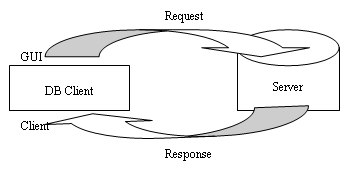
R/2 Client-Server
1. Client provides an interface to communicate with the server.
Eg: IE, GUI
2. Client uses DB Client software to communicate with server
3. Each request is processed by communicating with server only i.e. there is no intermediate layer in R/2
4. Servers are heavily loaded/ traffic, long queues there by reducing the performance of the servers.
5. There is no queuing mechanism and only server queues are maintained.
6. Server needs to process the request (Understanding the user language). Interpretation takes time.
These are the disadvantages of R/2 Systems.
Client Server Environment:
Client requests and server responds. The major disadvantage of Client Server architecture is
1. DB Client is installed on the client
2. Processing takes place at client side
3. No intermediate buffers for the frequently accessed content
4. There is no queue mechanism to handle the requests there by servers are heavily loaded.
5. The server side processing consumes resources to process (Interpret the user requests)
The need of middle layer/ tier rose to come out of the steps. The result is the Application layer/ Server
Application server is deployed and it provides the following functionality
1. DB Client is installed to free up the clients (i.e. there will be only one DB Client for Application server earlier each client needs DB Client software)
2. There is a queue mechanism to handle the request there by reducing the load on the client and server.
3. User requests are served based on the FIFO using dispatcher.
4. Work process task handlers are used to interpret and process the request.
5. Intermediate buffers are available for the frequently accessed content to reduce the load on the Database server.
6. The server side processing is only takes place for new requests there by server resources are optimally used.